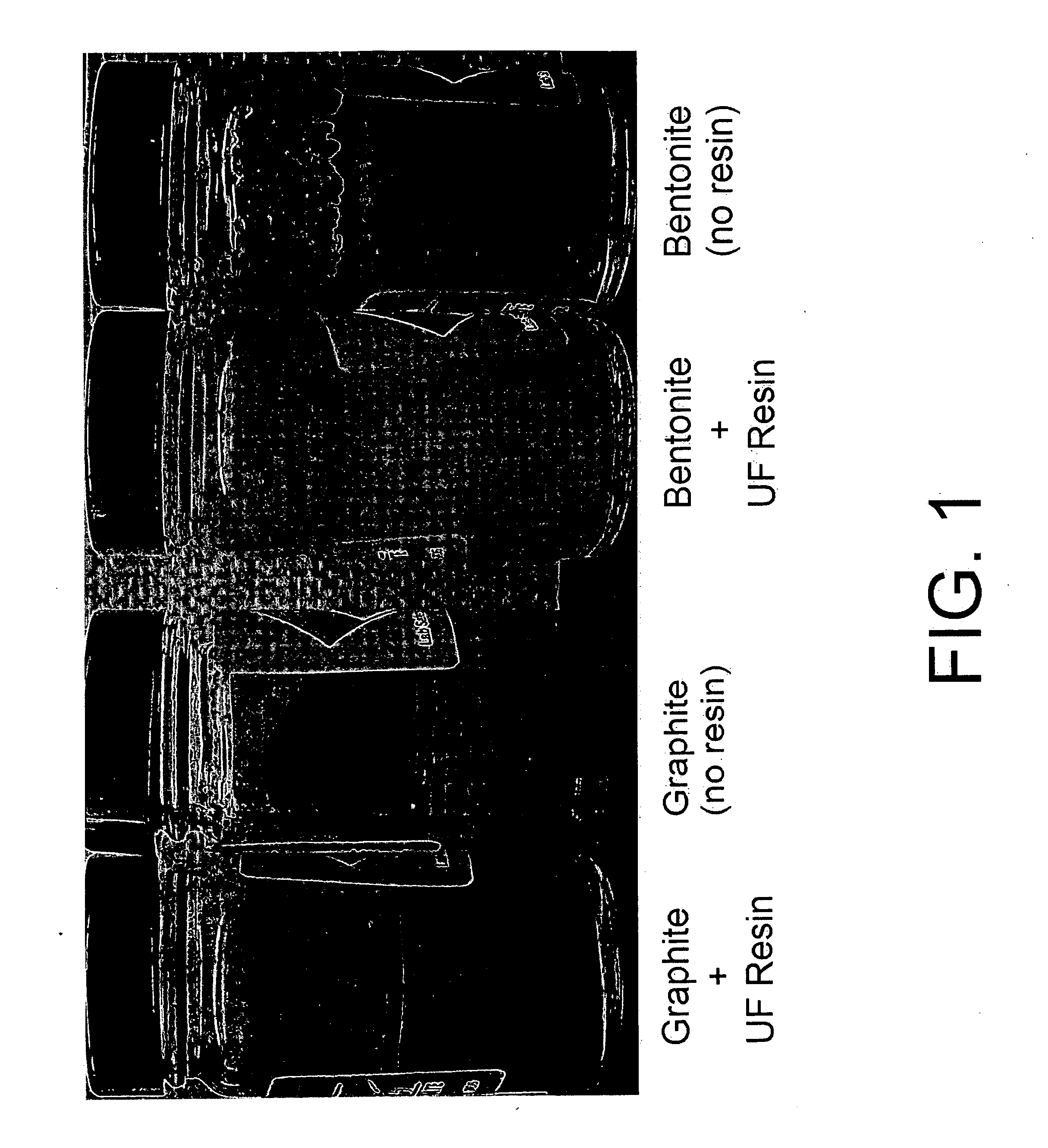Amine-aldehyde resins and uses thereof in separation processes
a technology of aminealdehyde resin and separation process, which is applied in the field of resins, can solve the problems of not being able to predict the utility of the agent, no agent is currently used to improve the separation of solid/liquid, and insufficient refinement in many cases, so as to achieve high versatility
- Summary
- Abstract
- Description
- Claims
- Application Information
AI Technical Summary
Benefits of technology
Problems solved by technology
Method used
Image
Examples
example 1
[0092] Various urea-formaldehyde resins were prepared as low molecular weight condensate resins, initially under alkaline conditions to form methylolated urea adducts, and then under acidic conditions to form the condensate. The condensation reaction was stopped by raising the pH of the condensation reaction mixture. Other preparation conditions were as described above. These resins are identified in Table 1 below with respect to their molecular weight (Mol. Wt.) in grams / mole and their approximate normalized weight percentages of free urea, cyclic urea species (cyclic urea), mono-methylolated urea (Mono), and combined di- / tri-methylolated urea (Di / Tri). In each case, the resins were in a solution having a resin solids content of 45-70%, a viscosity of 500 cps or less, and a free formaldehyde content of less than 5% by weight.
TABLE 1Urea-Formaldehyde ResinsFreeIDMol. Wt.aUreaCyclic UreaMonoDi / TriResin A4068393023Resin B*9975502223Resin C and C′**5006462523Resin D and D′***13143 21...
example 2
[0093] Samples of urea-formaldehyde (UF) resins similar to those described in Example 1 were tested for their ability to settle graphite and bentonite, suspended in aqueous media. In four separate experiments, 4.4 gram samples of particulate graphite (two experiments) and particulate bentonite (two experiments) were suspended in 220 grams of water in a jar, and the jars were in each case shaken vigorously for two minutes to suspend the solid particles. However, 22 grams of UF resin were added to one of the jars containing the graphite and also to one of the jars containing bentonite prior to shaking. The four jars were left to stand for 24 hours and observed to evaluate the effect of the added UF resin on the solid-liquid separation via settling. The four jars were photographed and are shown in FIG. 1.
[0094] As is apparent from FIG. 1, in the leftmost jar, to which UF resin was added, the graphite was settled on the bottom of the jar. No graphite was visible at the air-water interf...
example 3
[0096] A urea-formaldehyde (UF) resin similar to those described in Example 1, was tested for its ability to reduce the dewatering time, by filtration, of various solid contaminants (i.e., montmorillonite, bentonite, and graphite) suspended in aqueous slurries. In each experiment, a 25 gram sample of solid contaminant was uniformly slurried with 100 grams of 0.01 molar KNO3. The pH of the slurry was measured. The slurry was then subjected to vacuum filtration using a standard 12.7 cm diameter Buchner funnel apparatus and 11.0 cm diameter Whatman qualitative #1 filter paper. Except for the first experiment using montmorillonte, the dewatering time in each case was the time required to recover 100 ml of filtrate through the filter paper. In the case of montmorillonite dewatering, the solid used was so fine that an excess of 5 minutes would have been required to remove 100 ml of filtrate. Therefore, the relative dewatering time was based on the amount of filtrate removed in 5 minutes. ...
PUM
| Property | Measurement | Unit |
|---|---|---|
| Time | aaaaa | aaaaa |
| Time | aaaaa | aaaaa |
| Time | aaaaa | aaaaa |
Abstract
Description
Claims
Application Information
 Login to View More
Login to View More - R&D
- Intellectual Property
- Life Sciences
- Materials
- Tech Scout
- Unparalleled Data Quality
- Higher Quality Content
- 60% Fewer Hallucinations
Browse by: Latest US Patents, China's latest patents, Technical Efficacy Thesaurus, Application Domain, Technology Topic, Popular Technical Reports.
© 2025 PatSnap. All rights reserved.Legal|Privacy policy|Modern Slavery Act Transparency Statement|Sitemap|About US| Contact US: help@patsnap.com



